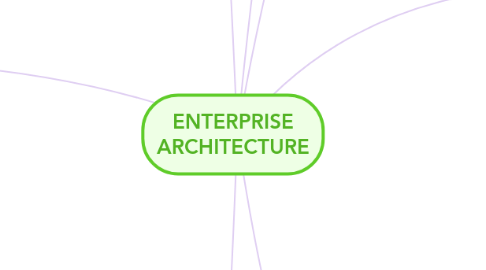
1. Contoh Framework
1.1. EAP
1.1.1. Initiation Planning
1.1.2. Preliminary business model
1.1.3. ; Enterprise survey
1.1.4. Current systems and technology architecture
1.1.5. Data architecture
1.1.6. Application architecture
1.1.7. Technology architecture
1.1.8. Implementation plan
1.1.9. Planning conclusion
1.1.10. Transition to implementation
1.2. TOGAF
1.2.1. Preliminary
1.2.2. Architecture vision
1.2.3. Business Architecture
1.2.4. IS Architecture
1.2.5. Technology Architecture
1.2.6. Opportunities and Solutions
1.2.7. Migration Planning
1.2.8. Implementation Governance
1.2.9. Architecture Change Management
1.3. DODAF
1.3.1. Capability
1.3.2. Data and Information
1.3.3. Operational
1.3.4. Project
1.3.5. Services
1.3.6. Standards
1.3.7. Systems
1.4. Gartner
1.4.1. Business Owners
1.4.2. Information Specialists
1.4.3. The Technology Implementers.
1.5. FEA
1.5.1. Architectural Analysis
1.5.2. Architectural Definition
1.5.3. Investment and Funding Strategy
1.5.4. Program-Management Plan and Execute Projects
2. Migrasi data dengan TOGAF
2.1. Metode pengembangan dari TOGAF dapat menyediakan kerangka kerja untuk mengatasi masalah migrasi data yang paling umum.
2.2. 4 Dimensi
2.2.1. Organizational dimension
2.2.2. Procedural standards
2.2.3. Business dimension
2.2.4. Technical dimension
2.3. 12 Phase
2.3.1. Project, quality and risk management
2.3.2. Migration strategy
2.3.3. Data analysis
2.3.4. Migration concept
2.3.5. Transformation definition
2.3.6. Program adaption
2.3.7. System preparation
2.3.8. Load and test
2.3.9. Approval
2.3.10. Productive migration
2.3.11. Data cleansing
3. Jenis Pola Manajemen EA
3.1. Methodology Patterns (M-Pattern)
3.2. Viewpoint Patterns (V-Pattern)
3.3. Information Model Patterns (I-Pattern)
3.3.1. Business application
3.3.2. Business process
3.3.3. Business Support Migration
3.3.4. Business support provider
3.3.5. Introduction
3.3.6. Organizational unit
3.3.7. Project
3.3.8. Project task
3.3.9. Retirement
3.3.10. Support relationship
3.4. Anti-Pattern
4. Konsep SOA pada Enterprise Architecture (EA) Framework
4.1. SOA
4.1.1. Suatu cara untuk mengembangkan sistem dengan menyusun software agar layanan / function dapat saling terintegrasi
4.2. Service-Oriented Enterprise Architecture (SOEA)
4.2.1. Sinergi antara SOA dan EA yang memungkinkan keduanya untuk menyelesaikan satu sama lain agar lebih baik untuk mendukung kebutuhan bisnis
4.3. perspective SOA
4.3.1. The business perspective
4.3.2. The architecture perspective
4.3.3. The implementation perspective
4.4. Komponen SOA
4.4.1. The service directory
4.4.2. The service provider
4.4.3. The service requester that uses the service directory to find an appropriate service
4.5. Standart SOA
4.5.1. SOAP (Simple Object Access Protocol)
4.5.2. WSDL (Web Services Description Language)
4.5.3. UDDI (Universal Description, Discovery, and Integration)
5. Framework SOEA
5.1. Architectural layers
5.1.1. - Business Architecture
5.1.2. - Application architecture
5.1.3. - Infrastructure architecture
5.2. Proposed Project Phases
5.2.1. - Project Planning
5.2.2. - As-Is Architecture
5.2.2.1. Business As-Is Architecture
5.2.2.2. IT As-Is Architecture
5.2.3. - Analysis of As-Is Architecture
5.2.4. - To-Be Architecture
5.2.4.1. Business To-Be Architecture
5.2.4.2. IT To-Be Architecture
5.2.5. - Migration Plan
5.3. Project management recommendations
5.3.1. - Project Management Plan (PMP)
5.3.2. - Readiness Assessment
5.3.3. - Change Management and learning
5.3.4. - Portfolio of experts
